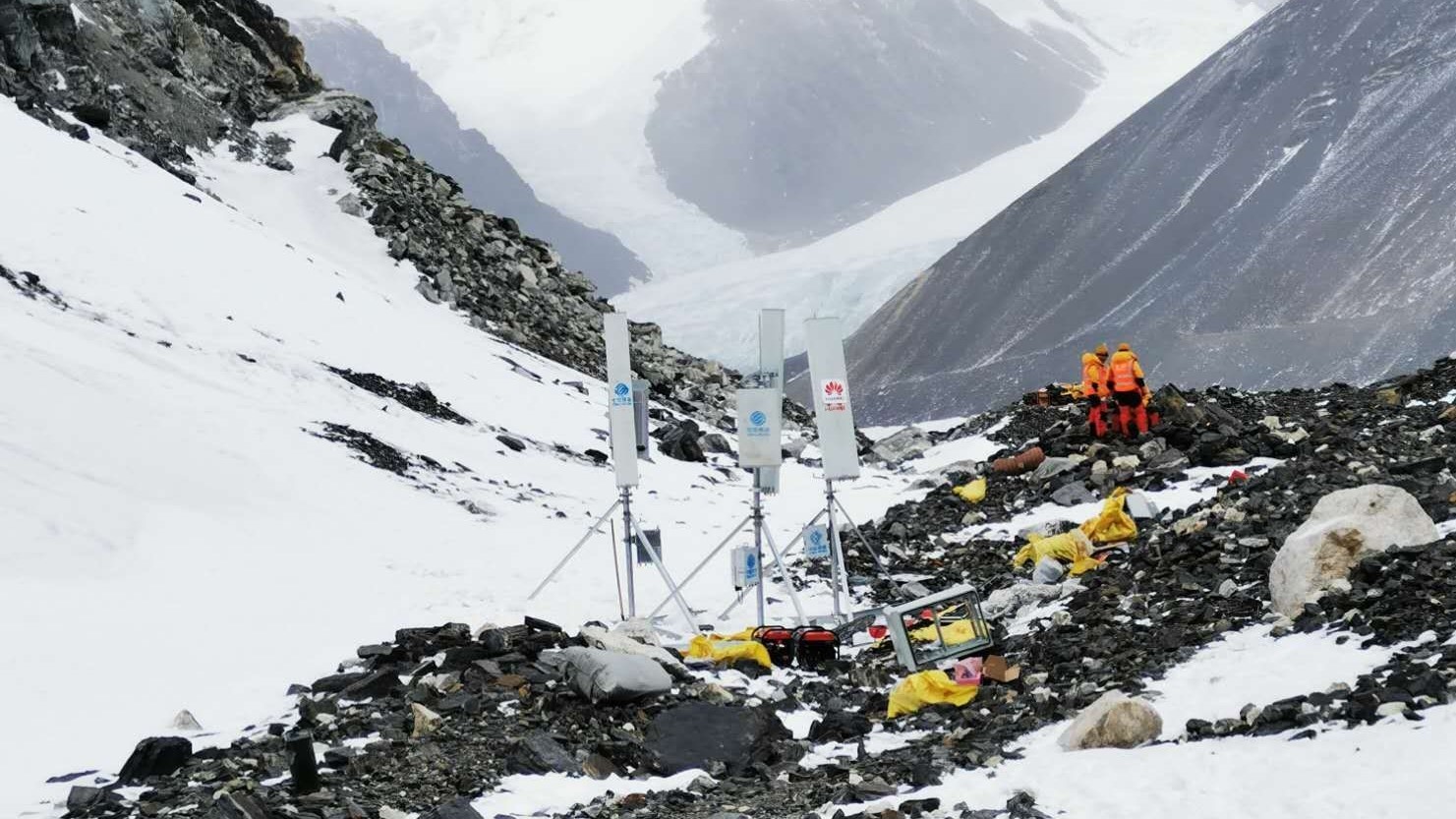Mount Everest is now 5G enabled
5G network will support re-measurement of world's highest peak

Huawei and China Mobile have built the world’s highest 5G network on Mount Everest in a bid to demonstrate the potential of the technology in extreme conditions.
The sites have been built to commemorate the anniversary of two Chinese mountaineering achievements. It is now 60 years since the first successful ascent of the world’s highest mountain from the north ridge and the 45th anniversary of the first official accurate measurement of the peak.
Huawei has built five base stations on the mountain, located at Base Camp (5, 300 metres), the transition camp (5,800 metres) and the forward camp (6,500 metres).
- UK falling behind on 5G awareness
- Huawei lays down 5G leadership gauntlet
- US senators urge UK rethink on Huawei and 5G
World's highest 5G network
The sites are viewed as a unique case study for Huawei’s compact, integrated access points. The company claims its 5G AAU base station range can offer 20 times the capacity of a traditional base station whilst also being three times smaller in size.
These characteristics make the equipment more practical for the remote location and harsh conditions of mount Everest but there are also benefits closer to home as smaller, more powerful kit means operators can build out 5G infrastructure more rapidly and cost-effectively.
5G networks require greater density than 4G because of the need to support new applications reliant on constant connectivity and ultra-low latency. In urban environments, it is not possible to build conventional base stations, while existing sites have physical limits to the amount of equipment they can support.
Compact base station technology reduces the time and manpower required for installation, while the smaller dimensions ensures operators can maximise existing sites. Massive MIMO technology further enhances speeds and capacity by “tracking” users from the base station, intelligently sending multiple beams of data from antennas to the device. This enhances the effectiveness of base stations further.
Sign up to the TechRadar Pro newsletter to get all the top news, opinion, features and guidance your business needs to succeed!
The cheaper and easier it is for operators to densify and upgrade their networks, the sooner consumers will be able to access faster mobile networks and revolutionary new use cases.
The ability to access download speeds in excess of 1.7Gbps and upload speeds of 215Mbps at an altitude of 6,500 metres inevitably provides significant publicity opportunities for Huawei, but there will be a practical element to the project. The 5G network will provided communication services for a new attempt to measure Mount Everest. They will be supported by a dozen network specialists permanently stationed on the mountain.
Huawei competes with Ericsson, Nokia, Cisco and other networking firms in the bid to provide equipment for 5G rollouts around the world. However it has encountered hostility from the US, which is urging its allies to follow its lead and ban operators in their countries from dealing with the company on national security grounds.
Huawei has denied any allegations of wrongdoing and the US has yet to provide any evidence to support its claims.
- These are the best 5G phones you can buy in 2020
Steve McCaskill is TechRadar Pro's resident mobile industry expert, covering all aspects of the UK and global news, from operators to service providers and everything in between. He is a former editor of Silicon UK and journalist with over a decade's experience in the technology industry, writing about technology, in particular, telecoms, mobile and sports tech, sports, video games and media.